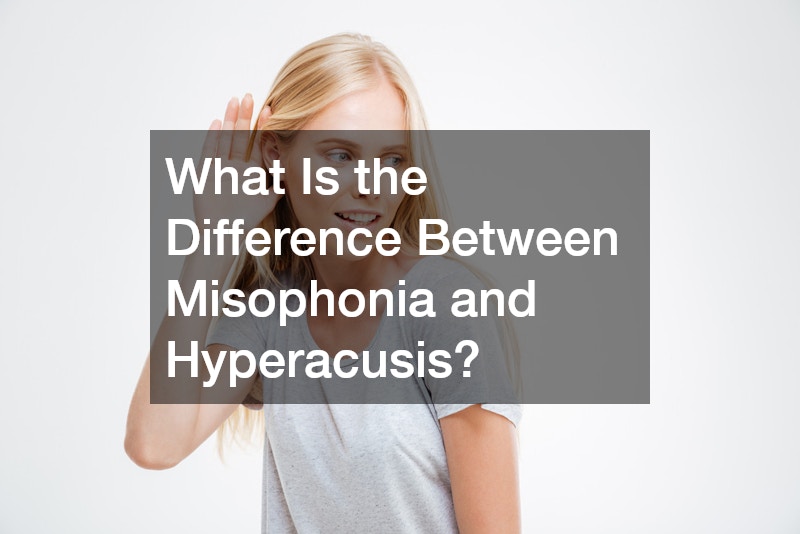
Both misophonia and hyperacusis are auditory conditions that cause discomfort in response to specific sounds, but they differ significantly in how individuals experience and react to these sounds. Understanding the distinctions between these two conditions is important for proper diagnosis and treatment.
Misophonia: Emotional Reactions to Specific Sounds
Misophonia, which literally means “hatred of sound,” is characterized by strong emotional reactions to specific sounds. These reactions often include anger, irritation, or anxiety, and they are typically triggered by sounds related to human behavior. Common triggers include chewing, breathing, tapping, or repetitive noises like pen clicking or finger snapping.
People with misophonia are not necessarily sensitive to loudness but rather to the specific nature of the sound. The emotional response can be overwhelming, leading to an urge to escape the situation or lash out. This condition can impact daily life, particularly in social settings where triggering sounds are more likely to occur. Many individuals with misophonia find themselves avoiding situations where they know they’ll be exposed to these sounds, which can lead to isolation or anxiety in social interactions.
Misophonia is not solely about volume; even relatively quiet sounds can provoke a strong emotional response. While research is still ongoing, it is believed that misophonia is linked to how the brain processes and assigns meaning to specific sounds, creating an intense emotional reaction.
Hyperacusis: Sensitivity to Volume
Hyperacusis, on the other hand, refers to an increased sensitivity to the loudness of everyday sounds. Individuals with hyperacusis perceive normal environmental sounds as painfully loud. Everyday sounds like running water, the hum of a refrigerator, or the clinking of dishes can cause discomfort or even pain. Unlike misophonia, hyperacusis is not linked to specific types of sounds but rather to their intensity.
This condition can be debilitating, as people with hyperacusis may find it difficult to tolerate normal activities such as attending events, shopping, or even having conversations in busy environments. Hyperacusis often accompanies other auditory conditions such as tinnitus or hearing loss, and it can result from trauma to the ear or exposure to loud noises over time.
Key Differences Between Misophonia and Hyperacusis
While both conditions affect how people perceive sound, the key difference lies in the nature of the response. Misophonia is characterized by emotional reactions to specific sounds, regardless of their volume, while hyperacusis is a sensitivity to the volume of sounds in general. Misophonia tends to involve annoyance or anger, whereas hyperacusis is more likely to cause discomfort or pain.
Watch the video above to learn more about what the difference between misophonia and hyperacusis is! .




